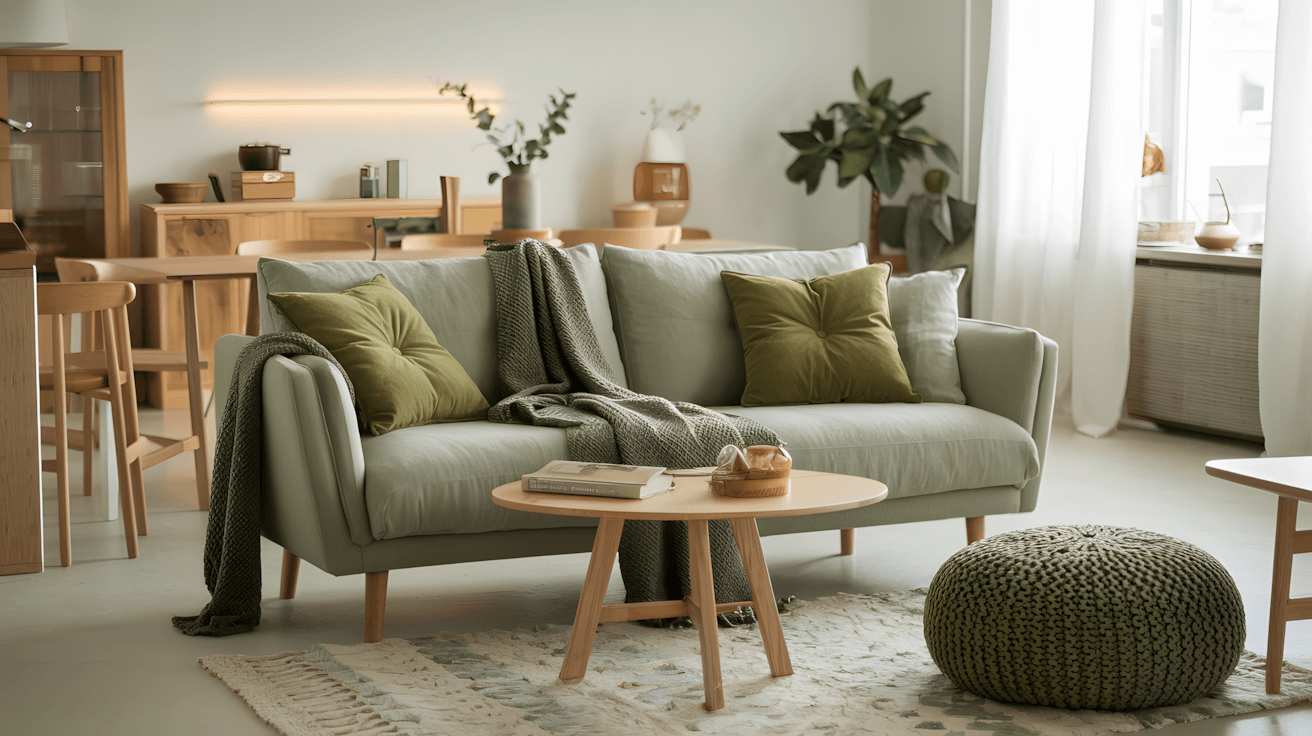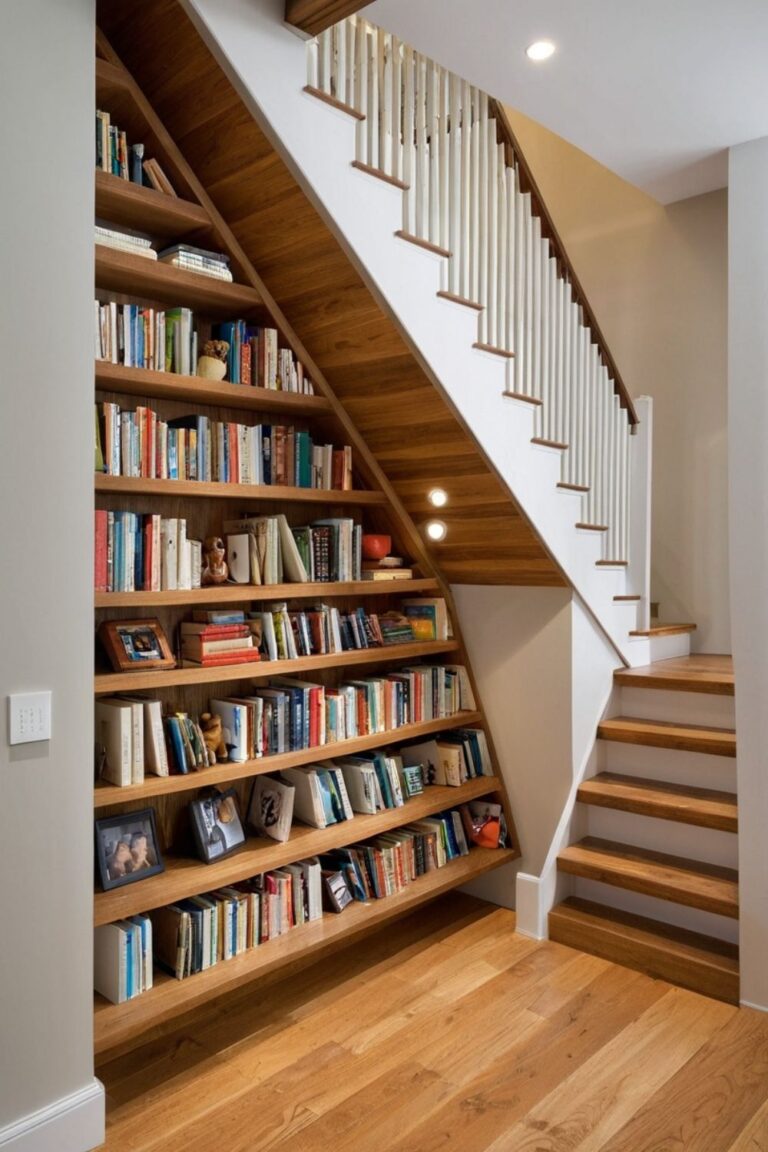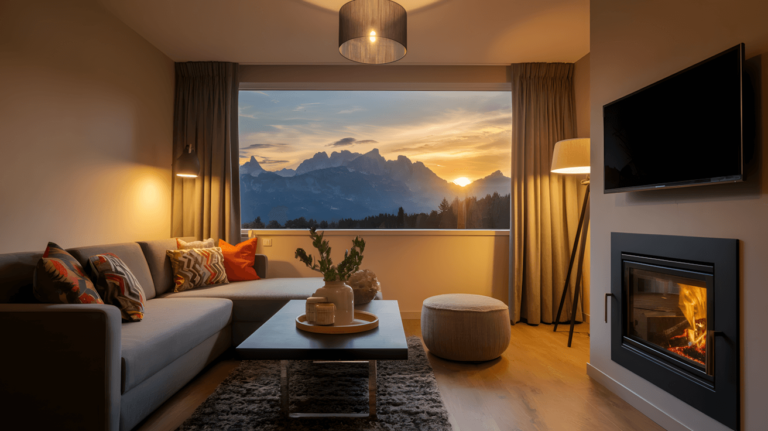After designing Nordic-inspired living spaces for homeowners who want to incorporate natural elements, I’ve discovered that adding green to Scandinavian interiors requires understanding both the cultural philosophy behind Nordic design and the practical challenges of maintaining color balance in minimalist spaces.
From my experience working with families on Scandinavian-style renovations, I’ve learned which green additions enhance the calming Nordic atmosphere and which can overwhelm the essential simplicity that defines authentic Scandinavian living.
These 15 approaches represent solutions that have successfully brought natural vibrancy to real homes while preserving the tranquil functionality that makes Nordic design so enduringly appealing.
Understanding Green in Nordic Design Philosophy
Authentic Scandinavian design incorporates nature not as decoration, but as essential connection to the outdoors during long Nordic winters. Green elements serve specific psychological and cultural purposes: providing visual rest for eyes strained by limited winter light, creating psychological warmth during cold seasons, and maintaining the biophilic connection that supports mental well-being in indoor-focused climates.
Foundation Color Applications
1. Sage Green Walls for Psychological Calm

This sophisticated approach demonstrates how muted green can serve as a therapeutic backdrop rather than just decorative choice.
Key Considerations:
- Sage undertones that complement natural light patterns – works with limited Nordic daylight rather than competing with it
- Paint selection with proper light reflectance values – maintains brightness essential in northern climates
- Color temperature coordination with wood tones – ensures harmony with traditional Nordic materials
- Seasonal adaptability through lighting adjustments – accommodates dramatic light changes throughout the year
Why it works psychologically: I’ve found that sage green provides the visual rest that Nordic eyes need during bright summer months while offering warmth during darker winter periods.
2. Olive-Toned Sofas for Natural Grounding

This substantial color commitment requires understanding how large green elements function in minimalist spaces over time.
Key Considerations:
- Olive green’s relationship to Nordic forest colors – creates subconscious connection to familiar natural environments
- Fabric selection for durability and aging – ensures the piece improves rather than degrades over years of use
- Scale appropriate for room proportions – maintains spatial balance essential to Nordic design principles
- Coordination with seasonal textile changes – allows adaptation without replacing major furniture pieces
Longevity insight: Olive green sofas work long-term when chosen for their connection to regional nature rather than current color trends.
Accent Integration Strategies
3. Green Accent Chairs for Flexible Color

This approach allows homeowners to experiment with green while maintaining the adaptability that Nordic design values.
Key Considerations:
- Positioning near natural light sources – enhances color vibrancy while providing reading comfort
- Chair scale that doesn’t overwhelm minimalist proportions – maintains visual balance in uncluttered spaces
- Fabric durability for daily use – ensures the piece functions practically rather than just decoratively
- Movable placement for seasonal room arrangements – supports Nordic tradition of adapting spaces to changing light conditions
Flexibility advantage: Accent chairs allow color experimentation without major commitment, important for Nordic design’s emphasis on thoughtful, lasting choices.
4. Nature-Inspired Artwork for Cultural Connection

This approach connects to Nordic appreciation for natural beauty while supporting local artistic traditions.
Key Considerations:
- Botanical subjects native to Nordic regions – creates authentic cultural connection rather than generic nature themes
- Frame materials coordinating with room’s wood tones – maintains material harmony essential to Scandinavian aesthetics
- Scale appropriate for wall proportions – avoids overwhelming the calm visual environment
- Seasonal rotation possibilities – allows connection to changing natural cycles important in Nordic culture
Cultural authenticity: Artwork should reflect genuine Nordic relationship with nature rather than imported nature themes.
Textile and Soft Furnishing Applications
5. Scandinavian-Inspired Green Textiles
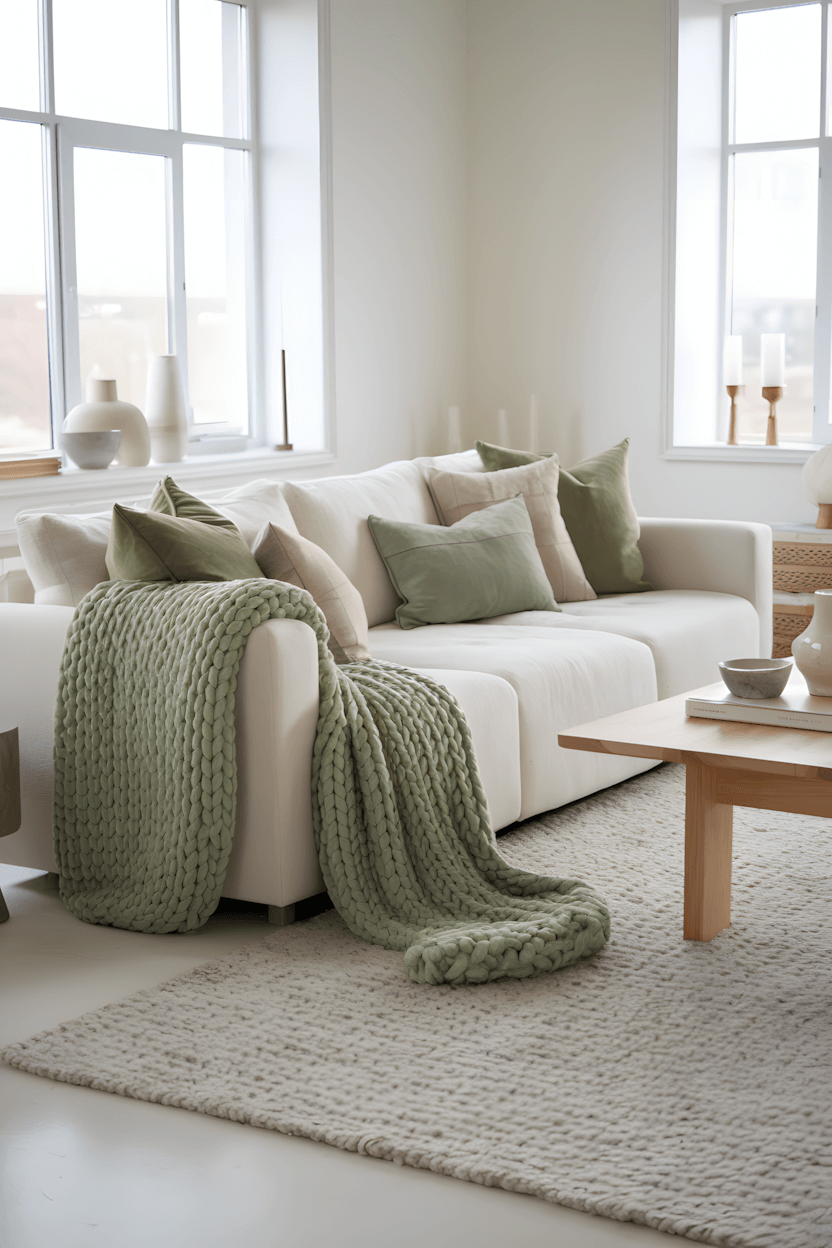
This layered approach provides the textural richness essential for Nordic comfort while introducing natural color.
Key Considerations:
- Natural fiber selection for climate appropriateness – provides proper insulation and breathability for northern climates
- Multiple green tones for visual depth – creates interest without abandoning minimalist principles
- Washability for practical maintenance – ensures textiles remain fresh through long indoor seasons
- Seasonal layering capabilities – allows adaptation to dramatic temperature changes
Textile strategy: Nordic textile use prioritizes function and comfort over purely decorative considerations.
6. Indoor Plants for Living Natural Elements
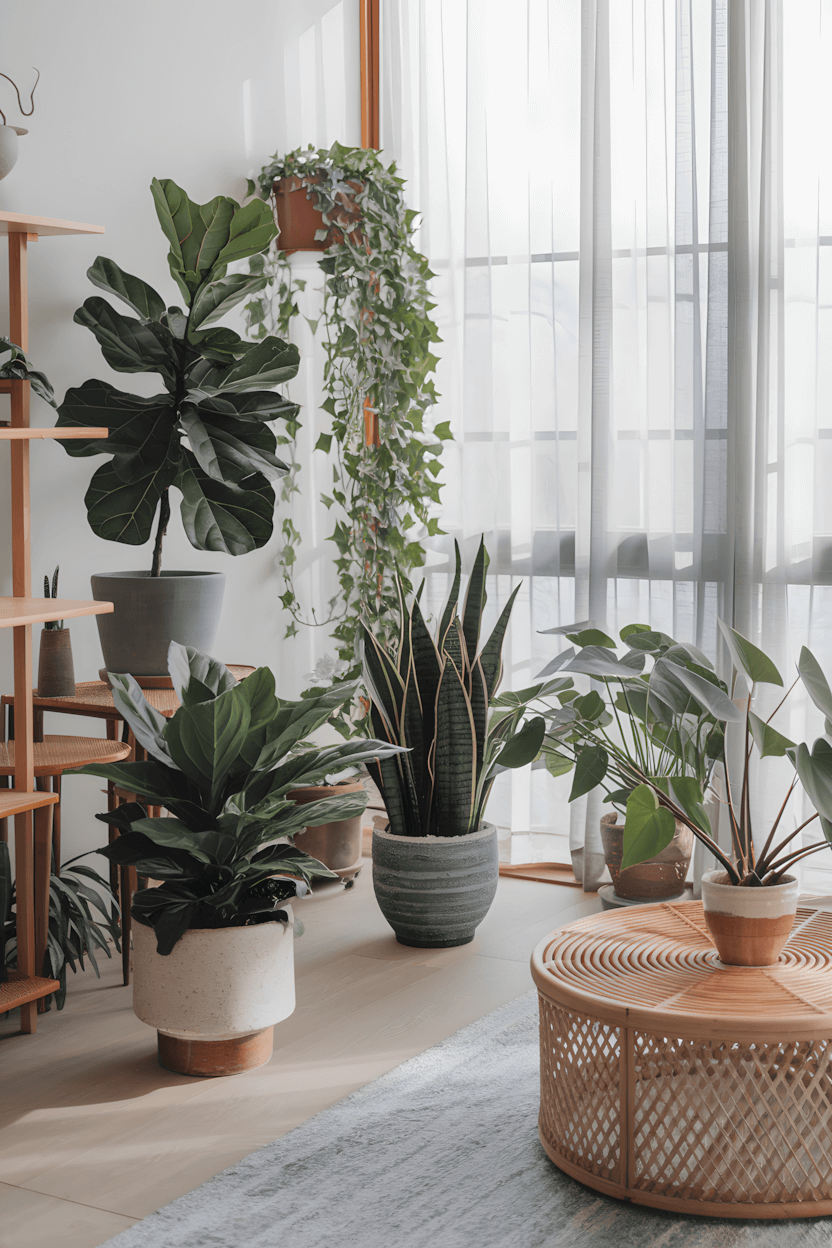
This biophilic approach addresses the Nordic need for nature connection during seasons when outdoor time is limited.
Key Considerations:
- Plant selection appropriate for Nordic light conditions – ensures success in low-light winter environments
- Maintenance requirements matching lifestyle – prevents plant care from becoming stressful rather than beneficial
- Pot and planter coordination with room aesthetics – maintains visual harmony while serving plant health
- Air purification benefits for indoor air quality – provides functional value beyond visual appeal
Biophilic benefit: Living plants address both aesthetic and psychological needs important in Nordic indoor living.
Decorative Object Integration
7. Green Ceramic and Glass Décor
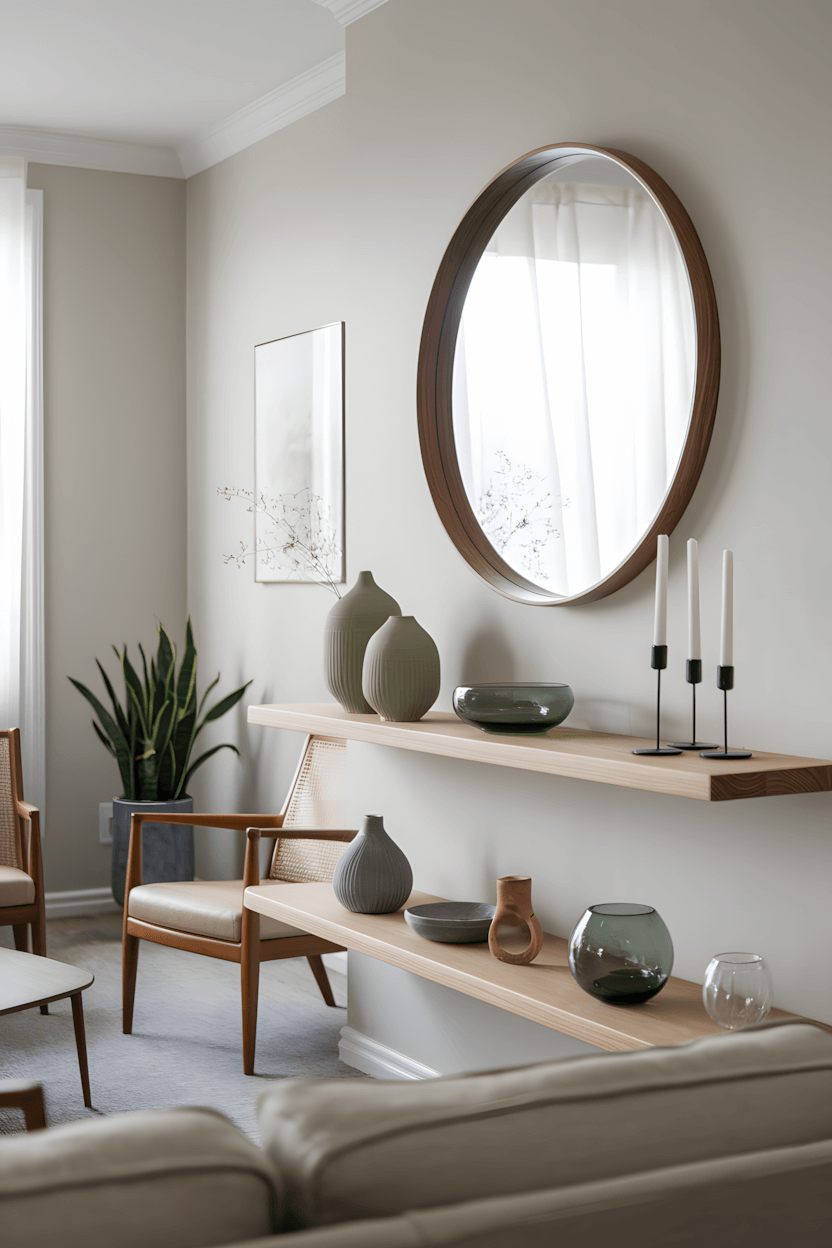
This approach supports Nordic appreciation for handcrafted objects while introducing subtle color elements.
Key Considerations:
- Handcrafted pieces supporting traditional Nordic pottery traditions – maintains cultural authenticity
- Green hues that complement rather than compete with natural materials – ensures visual harmony
- Functional beauty serving daily use – aligns with Nordic values of practical aesthetics
- Display arrangements that avoid visual clutter – maintains the calm environment essential to Nordic living
Craftsmanship value: Nordic design traditionally values visible quality and artisan skill in decorative objects.
8. Layered Green Tones for Visual Sophistication
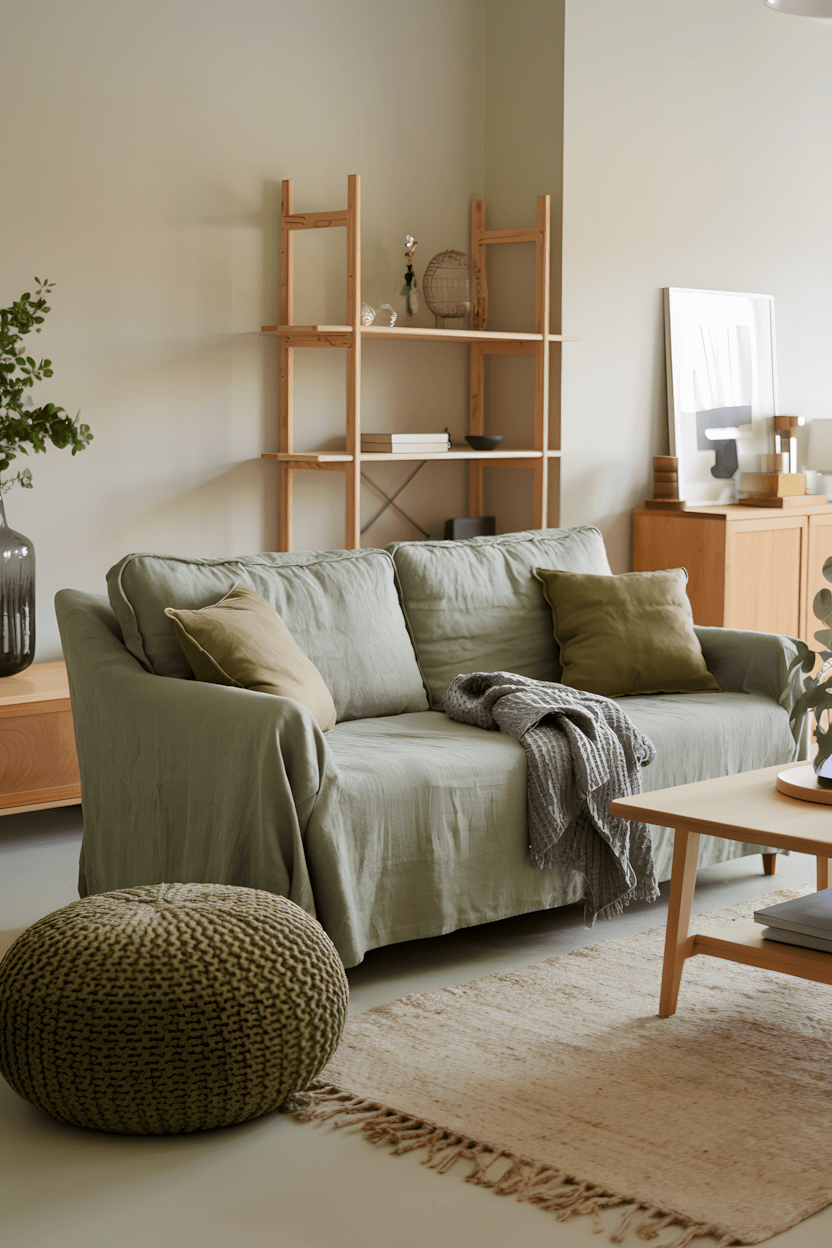
This advanced approach requires understanding how multiple greens interact in minimalist spaces.
Key Considerations:
- Undertone coordination to prevent visual conflict – ensures harmony rather than chaos in color mixing
- Material variety to create textural interest – adds depth while maintaining simplicity
- Proportion balance among different green elements – prevents any single green from overwhelming others
- Lighting considerations for color accuracy – ensures greens appear harmonious in varying light conditions
Color sophistication: Successful green layering requires understanding of color theory and Nordic light conditions.
Flooring and Large Surface Applications
9. Statement Green Rugs for Space Definition
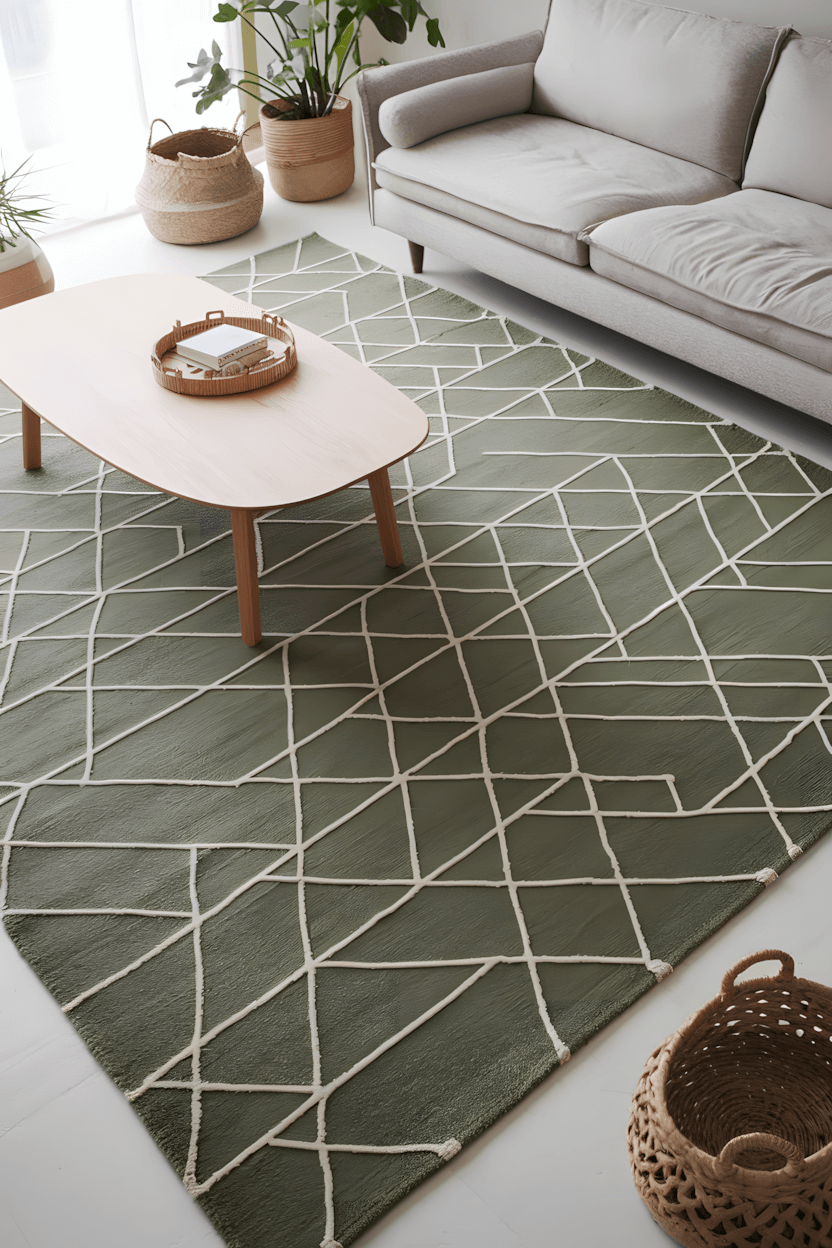
This grounding approach uses green to create comfort zones within larger Nordic living spaces.
Key Considerations:
- Natural fiber rugs for authentic material connection – maintains Nordic preference for organic materials
- Pattern selection that complements rather than competes – ensures visual calm while adding interest
- Size appropriate for furniture arrangement – supports Nordic emphasis on functional space planning
- Durability for daily use in high-traffic areas – ensures long-term performance and appearance
Space planning: Rugs in Nordic design serve functional purposes of comfort, sound absorption, and spatial organization.
10. Green-Tiled Fireplace Surrounds for Focal Interest
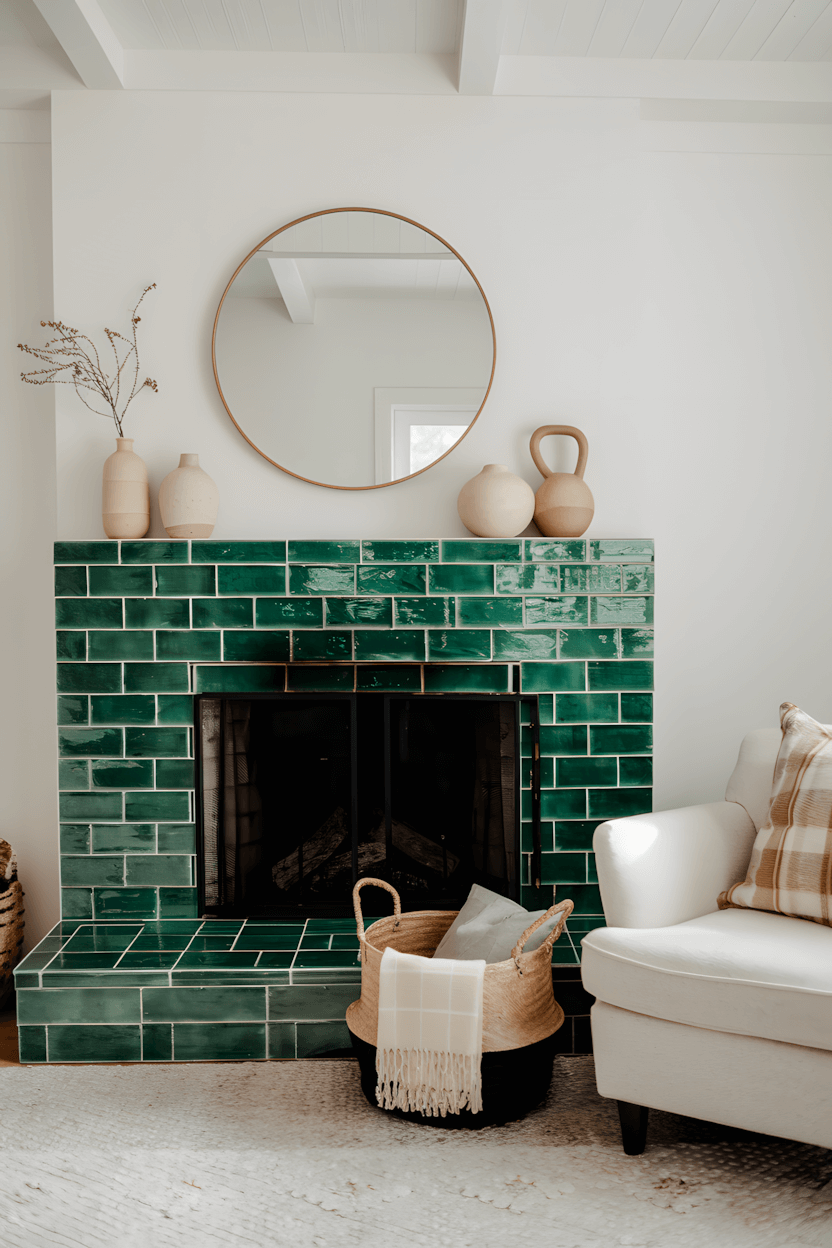
This architectural approach integrates green into structural elements while maintaining Nordic minimalism.
Key Considerations:
- Tile selection with appropriate scale and finish – maintains architectural proportions while adding color
- Green tones that coordinate with fireplace function – ensures color works with both active and inactive fireplace states
- Heat resistance and durability considerations – ensures safety and longevity in high-heat applications
- Integration with existing architectural elements – maintains harmony with room’s structural features
Architectural integration: Successful fireplace color integration requires understanding of both aesthetics and technical requirements.
Material Combination Strategies
11. Wood and Green Combinations for Natural Harmony
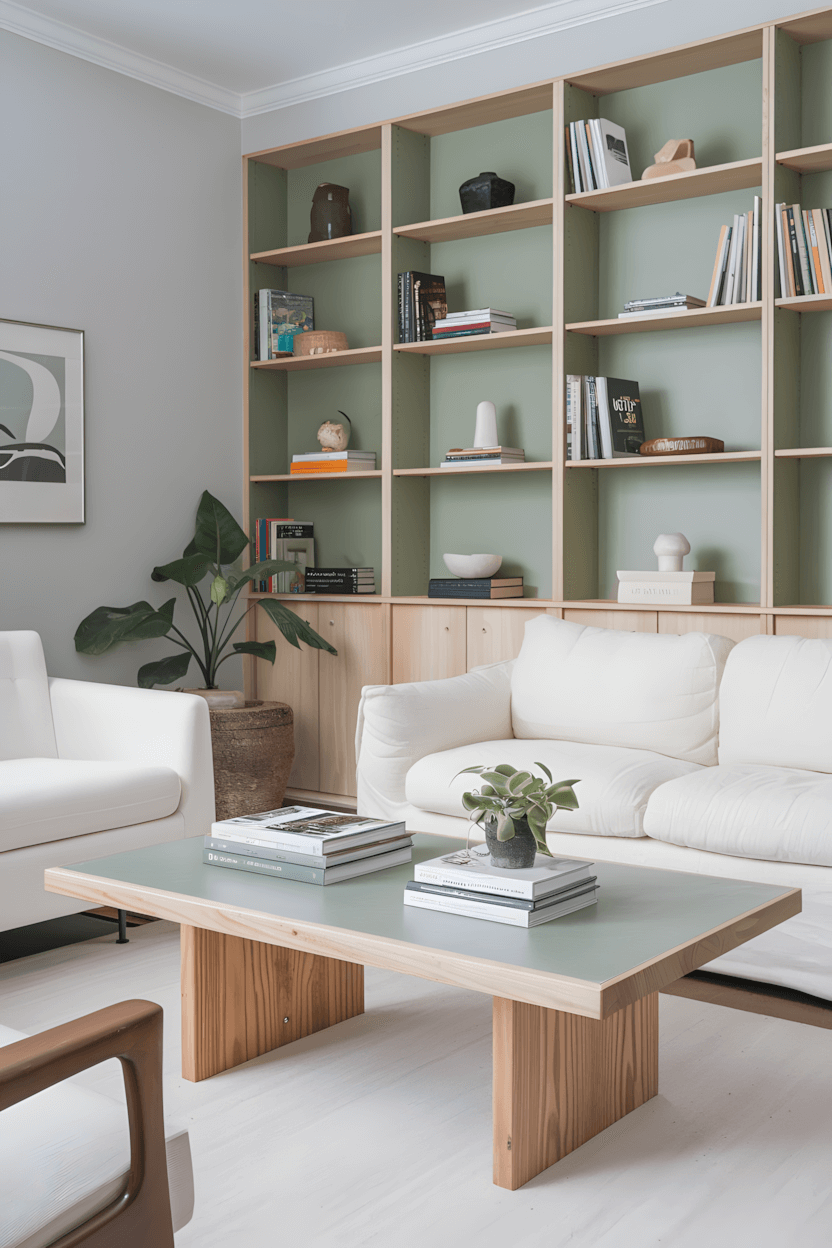
This approach leverages the natural affinity between wood tones and green hues found in Nordic forests.
Key Considerations:
- Wood species selection that complements green undertones – ensures natural harmony rather than color conflict
- Finish coordination between different wood elements – maintains material consistency throughout space
- Green element placement to enhance wood grain visibility – showcases natural materials as focal points
- Seasonal variation accommodation – allows both materials to change naturally with light conditions
Material authenticity: Nordic design celebrates honest material beauty enhanced rather than hidden by color additions.
12. Glass and Metal Green Accents for Contemporary Integration
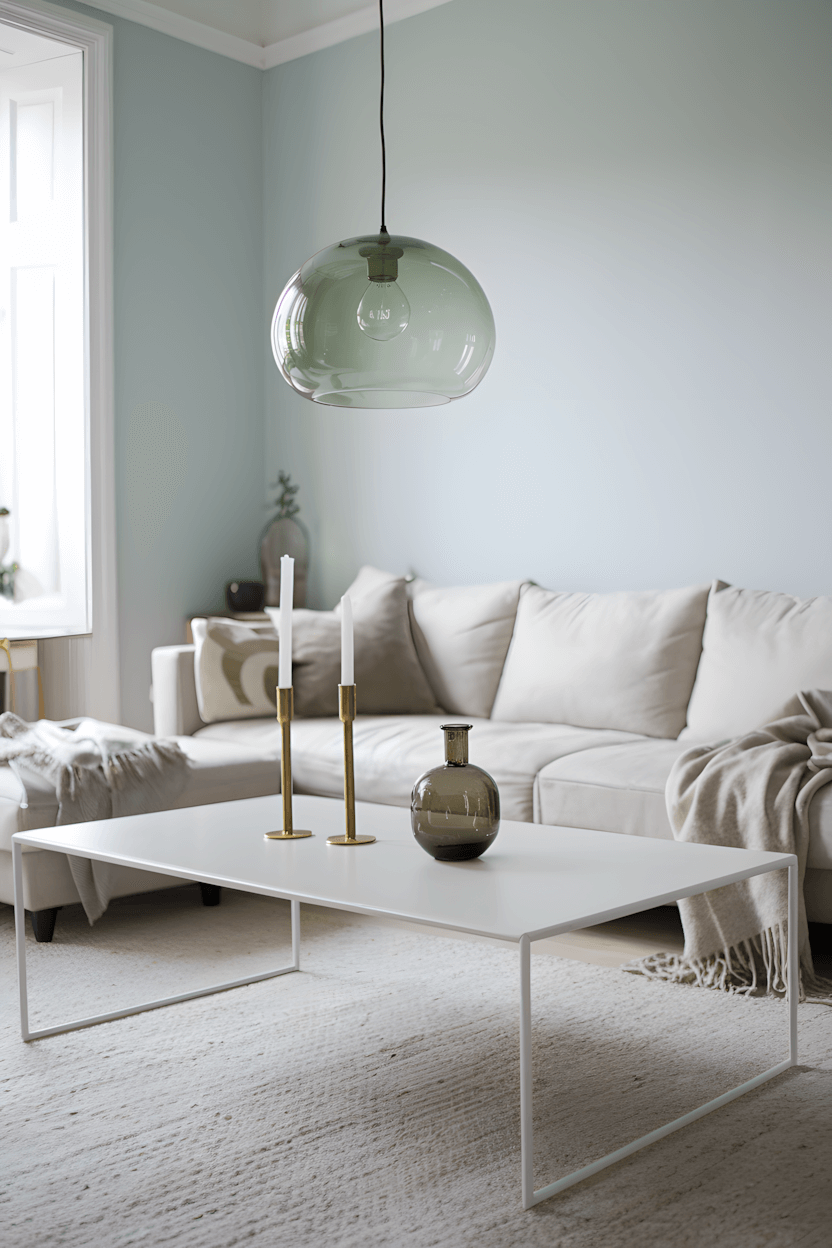
This sophisticated approach incorporates green through materials that add Nordic-appropriate sophistication.
Key Considerations:
- Metal finish selection that ages gracefully – ensures long-term beauty rather than quick deterioration
- Glass element positioning for light interaction – enhances both color vibrancy and spatial brightness
- Scale appropriate for minimalist aesthetics – maintains clean lines while adding color interest
- Coordination with existing metal elements – ensures material harmony throughout the space
Contemporary relevance: Modern Nordic design successfully incorporates contemporary materials while maintaining traditional values.
Pattern and Surface Treatment Applications
13. Botanical Wallpaper for Natural Pattern Integration
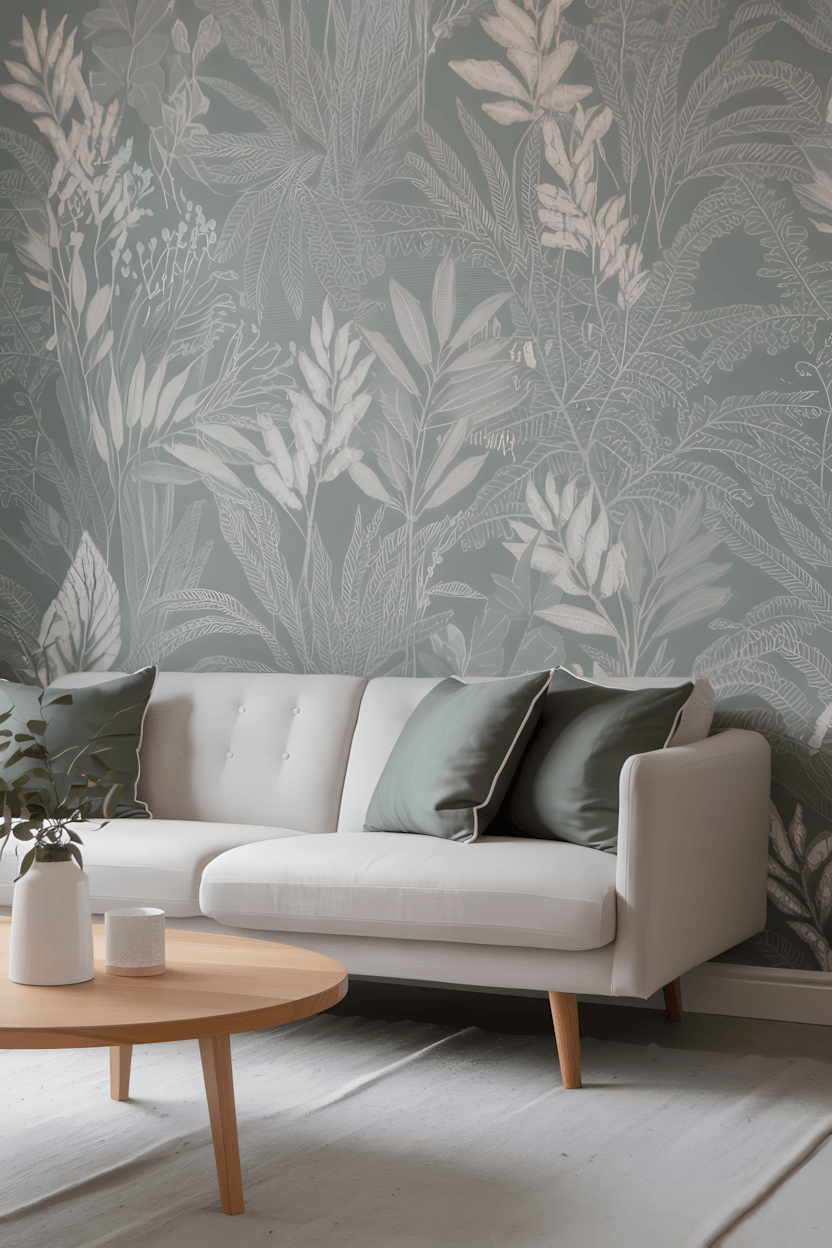
This bold approach requires careful balance to maintain Nordic simplicity while adding natural pattern interest.
Key Considerations:
- Pattern scale appropriate for room dimensions – ensures visual comfort rather than overwhelming
- Color saturation that maintains calming atmosphere – supports Nordic emphasis on restful environments
- Single accent wall application for balance – maintains minimalist principles while adding interest
- Coordination with existing natural elements – ensures pattern enhances rather than competes with plants and wood
Pattern restraint: Nordic design uses pattern sparingly and meaningfully rather than decoratively.
14. Muted Green Curtains for Soft Light Filtering
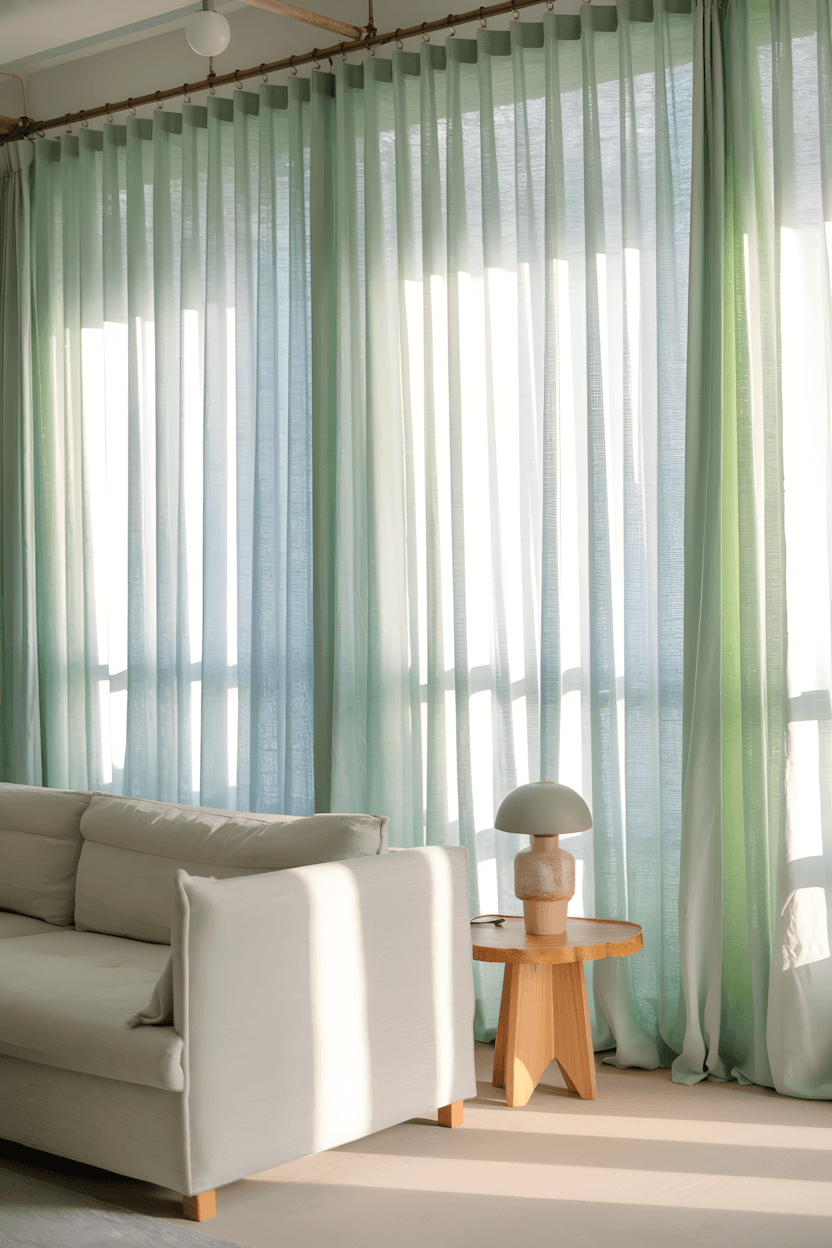
This window treatment approach provides color while serving the Nordic necessity of light management.
Key Considerations:
- Fabric selection for appropriate light filtration – balances privacy needs with maximum daylight penetration
- Hanging system that maximizes window exposure – prioritizes natural light access essential in Nordic climates
- Green tone coordination with wall colors – ensures harmony rather than competition between surfaces
- Seasonal adjustment capabilities – allows adaptation to dramatic seasonal light changes
Light management: Nordic window treatments must prioritize light access while providing color and privacy.
15. Green-Hued Lighting Fixtures for Atmospheric Enhancement

This sophisticated approach integrates green through lighting elements that serve both functional and aesthetic purposes.
Key Considerations:
- Light quality maintenance despite colored fixtures – ensures adequate illumination for Nordic winter needs
- Fixture placement for optimal light distribution – serves practical lighting needs while adding color interest
- Green tone selection that complements rather than distorts room colors – maintains color accuracy throughout space
- Dimming capabilities for mood adjustment – supports Nordic emphasis on creating hygge atmosphere
Lighting functionality: Nordic lighting design must serve essential practical needs while contributing to atmospheric comfort.
Creating Successful Green Nordic Living Spaces
After years of incorporating green into Scandinavian-style interiors, I’ve learned that successful Nordic green integration balances three essential considerations: respect for authentic Nordic relationship with nature, maintenance of the calm simplicity that defines Scandinavian living, and practical functionality for the realities of northern climate living.
The green Nordic living rooms that homeowners love long-term are those that solve real challenges—providing psychological warmth during dark seasons, creating connection to nature during indoor-focused periods, maintaining the restful atmosphere essential for Nordic well-being—while reflecting genuine Nordic values of natural beauty, functional design, and quality materials.
Most importantly, choose green elements for their authentic connection to Nordic nature and lifestyle rather than following color trends.
The most successful Nordic interiors feel like natural expressions of northern living rather than styled interpretations of Scandinavian aesthetics.
Which of these authentic Nordic approaches to green integration resonates with your vision for nature-connected, genuinely Scandinavian living?

